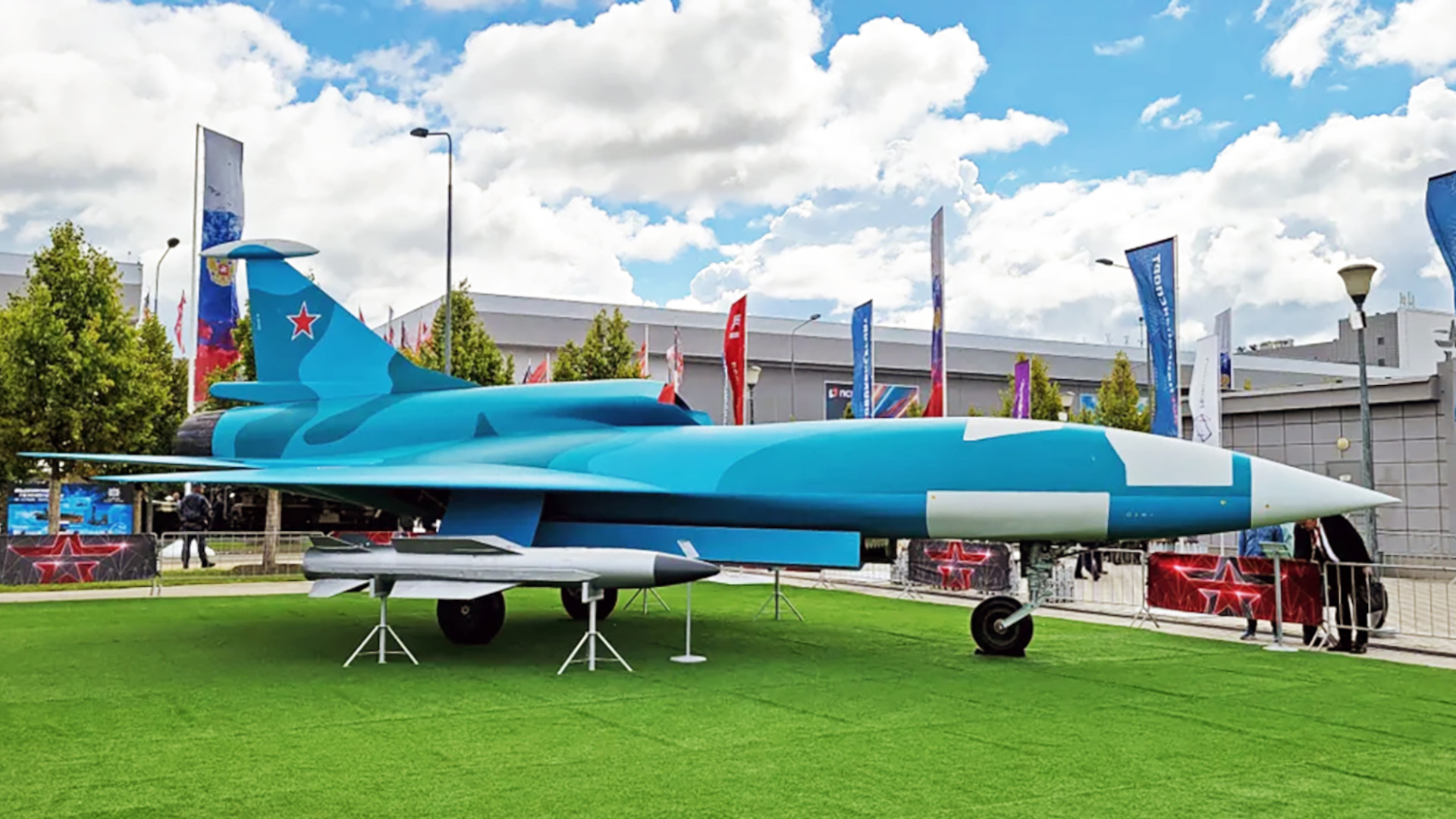A new Russian design concept for a ‘loyal wingman’-type drone has been unveiled, marking the country’s latest aspirational foray into unmanned combat air vehicles (UCAVs). Interestingly, the Kronshtadt company that designed the Grom (meaning Thunder) previously displayed another UCAV concept under the same name. However, the new fighter-like version of the Grom is very different, apparently stressing raw performance, especially in the transonic realm, over low-observable features and endurance.
A mockup of the new Grom drone is on display at the Army 2024 defense exhibition that is taking place in the Moscow region from August 12 to 14.

Unlike many modern UCAVs, the overall design of the Grom has a lot more in common with a Cold War-era tactical jet, with a cropped delta wing and a conventional tail section with horizontal stabilizers and a vertical fin. The fin mounts a distinctive fairing at the top, perhaps intended to contain a satellite communications antenna as found on some business jets, while another fairing is located at the root of the fin, which is a far more common feature on tactical aircraft, often containing a landing chute and/or electronic warfare gear.
Power is to be provided by a single turbofan engine, with a fighter-style circular dilating exhaust nozzle. The engine is fed by an unusually small trapezoidal-shaped air intake on top of the rear fuselage. A dorsal intake was also used on certain Soviet-era jet-powered drones, such as the Tu-141 Strizh and Tu-143 Reys, both of which have appeared in Ukrainian use in the current conflict with Russia, repurposed as one-way attack drones. In fact, the new Grom’s configuration is most reminiscent of these aircraft, as well as the much larger Tu-22 Blinder. It also has a passing resemblance to Boom Aero’s totally unrelated supersonic testbed design.
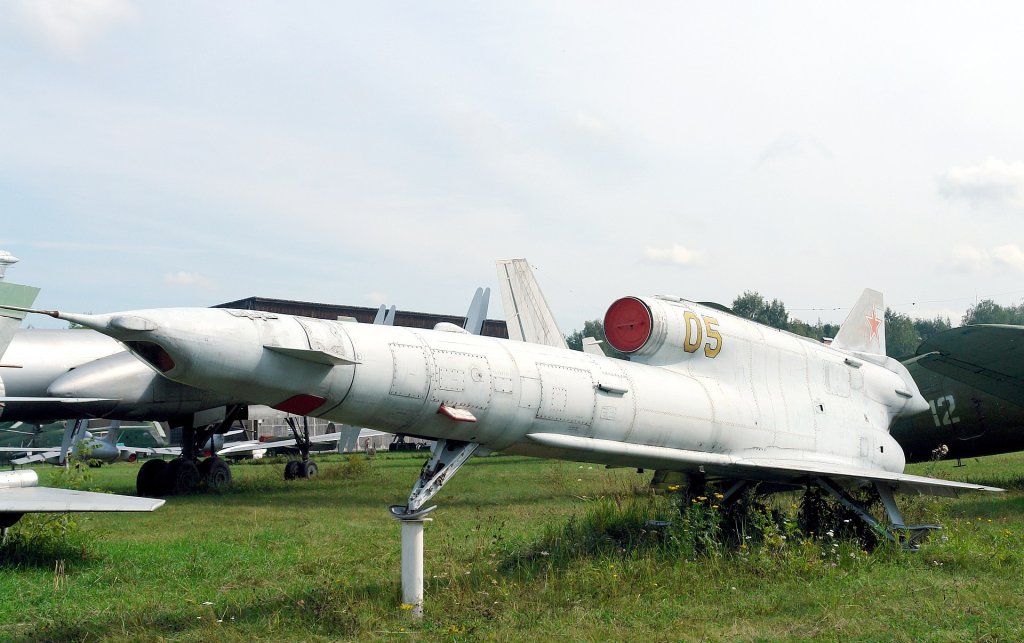
According to some reports, the powerplant will be the AI-222-25 two-shaft turbofan used in the Yak-130 Mitten jet trainer. This engine is not normally fitted with an afterburner, but this is an option and might be chosen for the Grom.
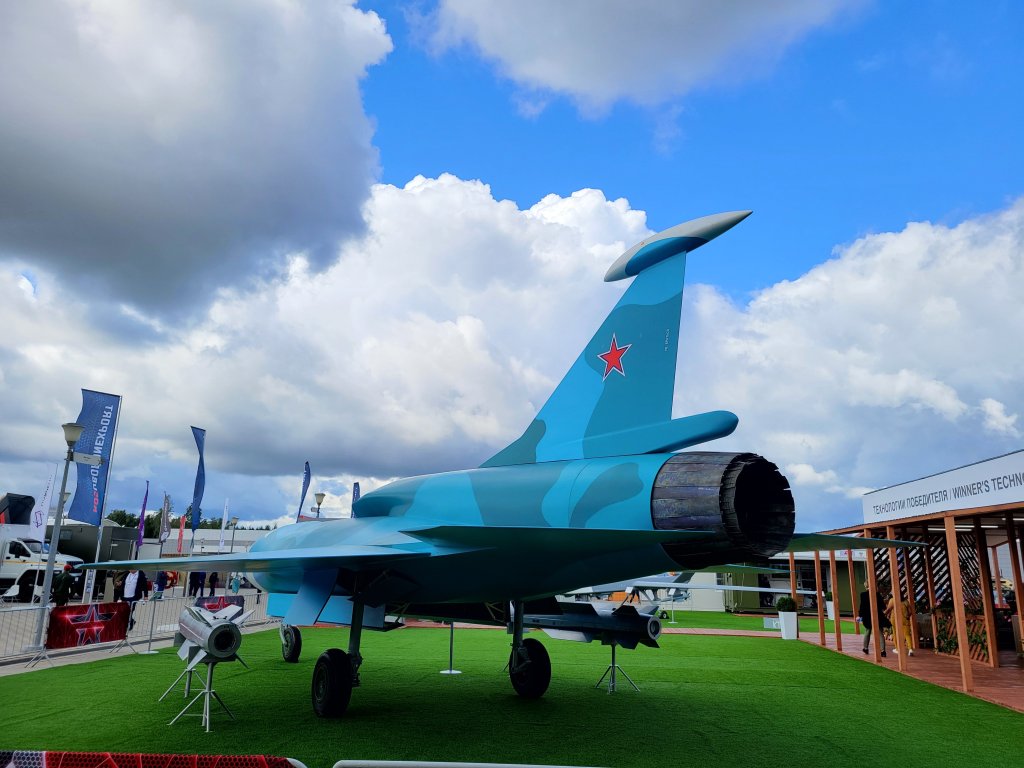
Other accounts suggest that a version of the RD-33 or the related RD-93 (used in the MiG-29 Fulcrum and JF-17 Thunder, respectively), which feature afterburning as standard, will power the Grom. Based on the appearance of the exhaust nozzle, one of these last two engine options would appear more likely.
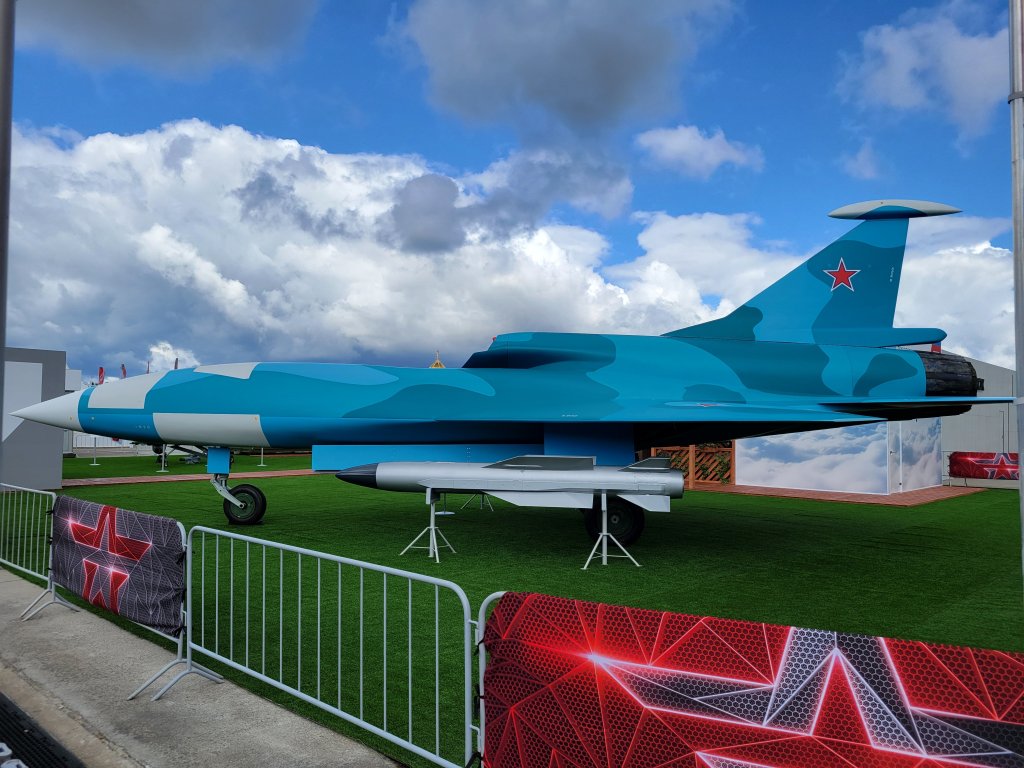
The Grom’s internal weapons bay was almost certainly selected to optimize the high-speed characteristics of the drone, rather than just driving down the aircraft’s radar cross-section. Provision will also be made for the carriage of stores under the wings, which would affect performance. The retractable landing gear is of the conventional tricycle type.
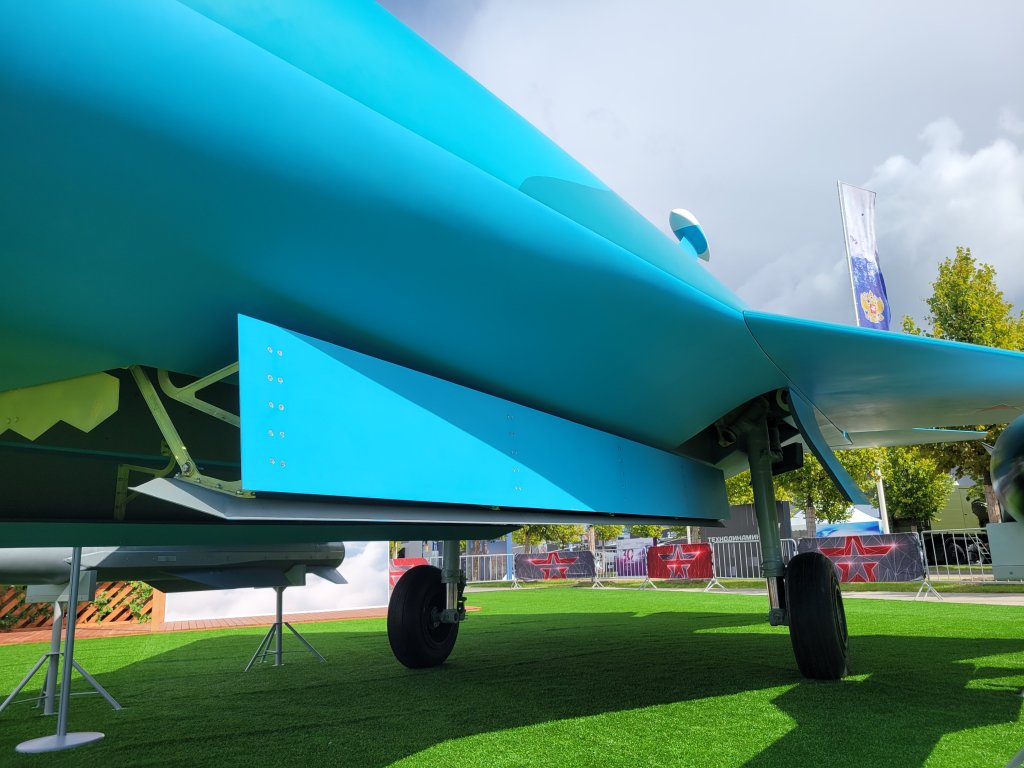
The streamlined forward fuselage of the drone terminates in a pointed nose, apparently including a radome. There is currently no sign of any electro-optical sensors or related apertures, although these would presumably be added at a later point. Visible around the nose are certain white-painted panels that may be intended to represent conformal antennas of the kind associated with electronic intelligence sensors, or perhaps a side-looking airborne radar (SLAR).
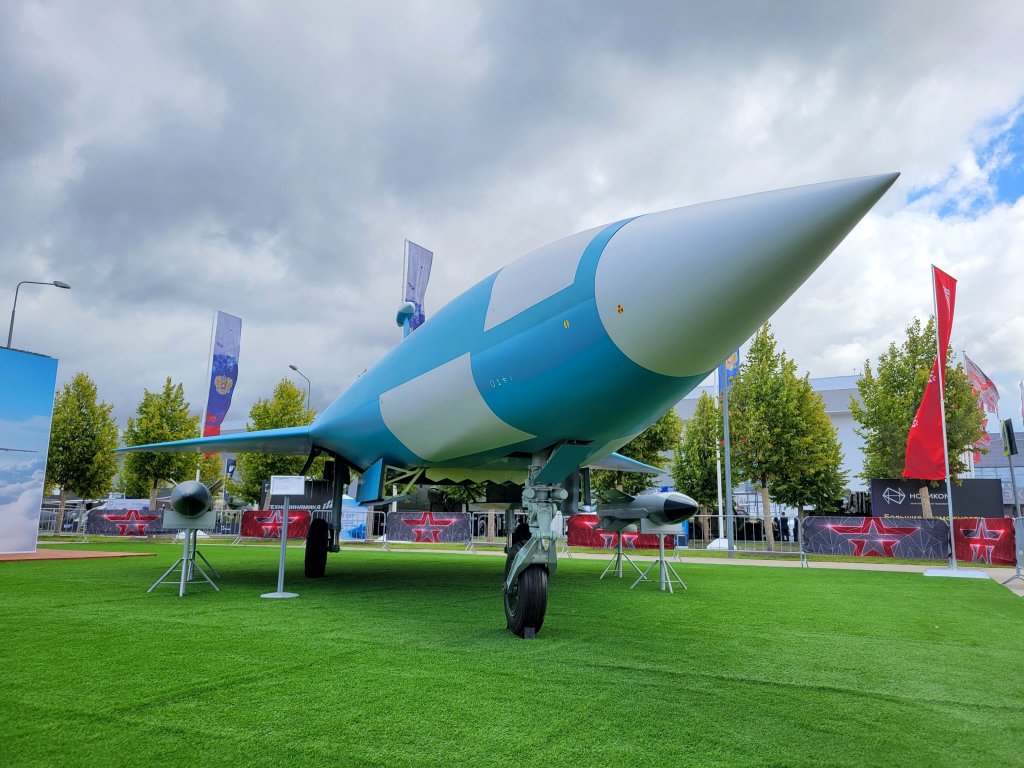
According to the manufacturer, the Grom will be armed with up to 2,000 kilograms (4,409 pounds) of stores, including laser-, satellite-, and TV-guided bombs and missiles. Guided and unguided bombs and missiles of 100, 250, and 500 kilograms (220, 551, and 1,102 pounds) will be part of the armory, including anti-radiation missiles. A graphic provided by Kronshtadt shows four underwing pylons, as well as the internal weapons bay, although these were not fitted to the mockup.
The drone mockup was displayed alongside examples of the Kh-58UShK anti-radiation missile, a much-upgraded version of the Cold War-era Kh-58 (AS-11 Kilter) that’s designed for internal carriage inside the weapon bays of new-generation fighters and drones.
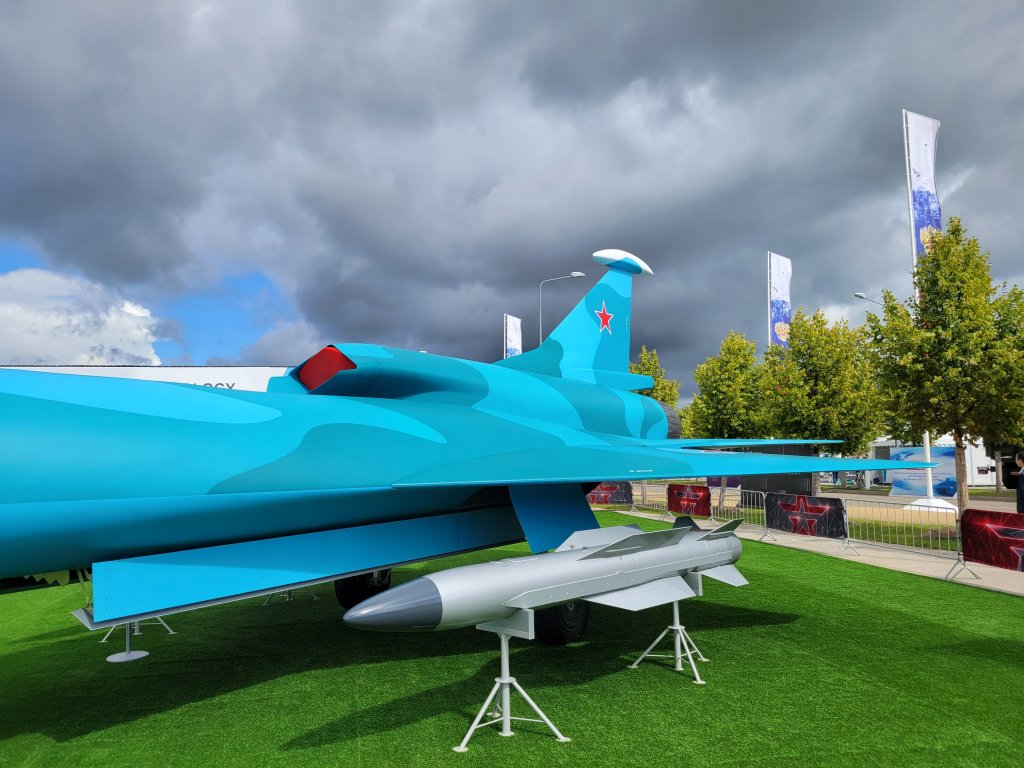
The specifications of the drone, as outlined by Kronshtadt, include a maximum altitude of 12,000 meters (39,370 feet), a maximum speed of 1,000 kilometers per hour (621 miles per hour), a cruising speed of 650-800 kilometers per hour (404-497 miles per hour), and a range of up to 700 kilometers (435 miles). Unconfirmed reports put the maximum takeoff weight of the drone at 7,000 kilograms (15,432 pounds), although this may well simply be based on the weight of the original Grom design.
In terms of the Grom’s role, Kronshtadt describes its vision of the drone “working as a wingman in the forward echelon in cooperation with manned aviation,” where its missions would include detecting and attacking ground-based air defense systems, reconnaissance (including ELINT), and attacking land and sea targets including beyond the front lines.
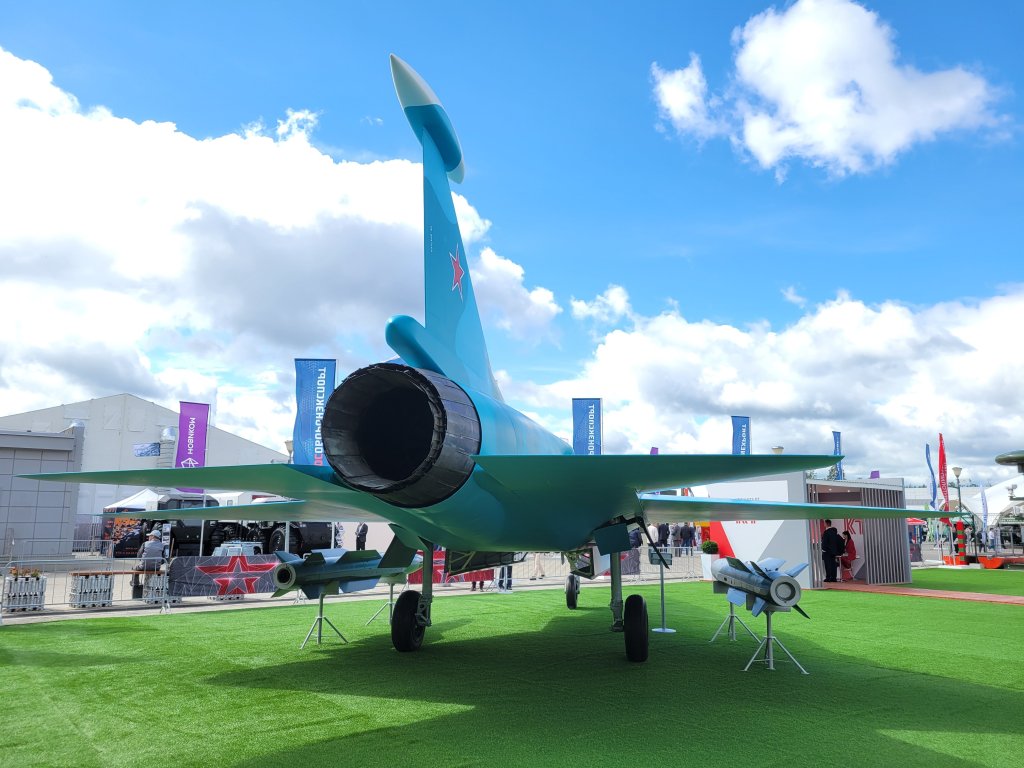
Overall, the design of the new-look Grom appears to be optimized for high speed and maneuverability, rather than low observability and endurance.
While the drone on display at Army 2024 is very clearly a mockup and may well be subject to change if and when an actual prototype or production version is ever built, it’s very notable how different its design philosophy is compared with the previous iteration of the Grom, seen below.

The original Grom — first unveiled at the Army 2020 exhibition — was also a UCAV but was similar in shape to other modern designs. These included the Airbus Barracuda, General Atomics’ Avenger, and especially the XQ-58 Valkyrie. The Valkyrie, in particular, is a stealthy, affordable, optionally expendable drone developed by Kratos in the United States, although Grom was significantly larger and was intended to operate from runways, not launched via rocket assistance. Since the appearance of the Valkyrie, drones with broadly similar overall configurations have become more prevalent, with similar features found on newer General Atomics designs intended to fulfill the U.S. Air Force’s Collaborative Combat Aircraft program requirements, as well as a Chinese drone that is clearly heavily inspired by the XQ-58, among others. In very general terms, this overall configuration dates back to the Tacit Blue demonstrator from the dawn of stealth.

The change from the previous Grom to the new, far more conventional configuration couldn’t be more striking. Perhaps based on lessons from the war in Ukraine, it’s been decided that the switch from a reduced signature and longer endurance design to a more conventional, faster one was worth making. Just doing whatever possible to ensure that a loyal wingman drone can be brought into service more quickly and using fewer resources could also be the primary driver behind the change. Limitations in low-observable design and manufacturing knowledge could have also been a huge factor here. That being said, the new Grom could have reduced signature attributes from the frontal view, but it’s far from a low-observable design by any measure. Maneuverability is another factor that could possibly provide some additional survivability, as well, if properly equipped to react to threats in its environment. This is especially true if the aircraft is meant to engage in air-to-air combat, which it seems oriented toward, although that is not mentioned in the information the company has released.
One innovative feature foreseen for the original Grom was a planned ability to control a “swarm” of 10 Molniya strike drones, which, according to reports, would be launched from “another carrier aircraft,” although it’s unclear if this would be from a crewed platform or another drone. Regardless, the concept involved the Grom flying ahead and triggering hostile air defenses, which would then be engaged by the smaller strike drones, apparently operating in some kind of networked capability, but directed by the Grom. It’s unclear if this aspiration is being retained for the new-look Grom, as well, but it needs to be stressed that there is so far no indication that this kind of technology is anywhere close to being successfully developed by Russia.
Whether based on changes in the design team at Kronshtadt or in response to differing Russian Ministry of Defense requirements, the new Grom — if it can be realized — would certainly seem to be a useful adjunct to crewed fighters like the Su-35S Flanker and the new-generation Su-57 Felon.
In the past, Russia’s S-70 Okhotnik-B, or Hunter-B, a flying wing UCAV, was openly intended to operate alongside the Su-57 in a loyal wingman role. However, the development of the Okhotnik-B has been slow, likely affected by the war in Ukraine, and it’s a notably more ambitious proposal than the Grom, especially in its new iteration.

www.twz.com
There remain some questions about the performance claims for the Grom, especially since we cannot be sure if it uses an afterburner, which should help it to achieve speeds over Mach 1 for short periods, if the aircraft was designed to handle it. At the very least, the new design is optimized for transonic operations, compared to the old one and the Okhotnik-B. In this respect, it actually has some parallels with the Anduril Fury design that is being offered for the Air Force’s Collaborative Combat Aircraft program, which is also a higher-performance-focused design than some of its rivals.

Above all, however, and provided the budget is available, the Grom could offer another route over the S-70 for Russia to field a CCA-like drone, optimized for flying more hazardous sorties, including strike, electronic warfare, or intelligence, surveillance, and reconnaissance (ISR), on the edge of or within contested airspace.
At this stage, however, there is no evidence that Russia has placed any orders for it and its ability to finance such a program — even if the technical parameters have been scaled back — remains questionable. Nonetheless, the dramatic changes in the appearance of the drone concept are interesting in themselves and may well reflect broader changes in Russia’s concept of how future advanced unmanned combat air vehicles should be employed.
Contact the author: thomas@thewarzone.com
